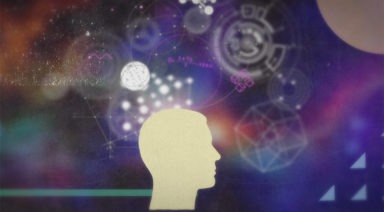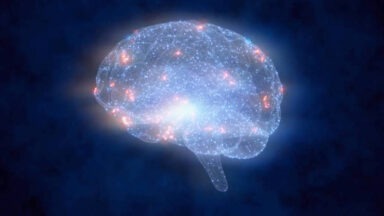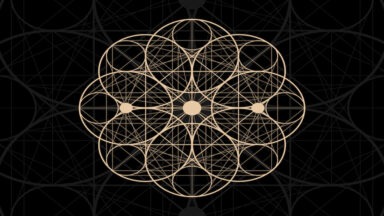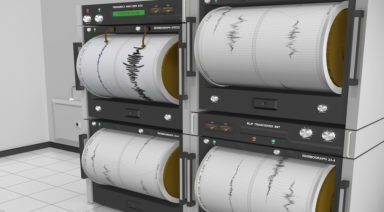Acquired Savant Syndrome Shows Superhuman Skills Latent in Anyone

Everyone has an area in life where they excel, but what if you woke up one day and suddenly had a newfound aptitude for a musical instrument, or intrinsic comprehension of complex mathematical equations? While this might sound like the premise of a science fiction novel, it’s actually a documented phenomenon called “Acquired Savant Syndrome,” and it can give subjects amazing abilities.
How is Savant Syndrome Acquired?
Savants are often associated with autism or the autistic subtype, Asperger’s syndrome. It’s common for those on the autistic spectrum to have incongruous gifts when it comes to music, arts, and mathematics.
The term “idiot savant” was originally coined by John Langdon Down, the discoverer of Down Syndrome. Derived from the French word idiot, and the word savoir, meaning “to know.” It was a non-derogatory word for someone with a low IQ, and unusual gifts or abilities such as in mathematics. This was soon replaced with the term “autistic savant,” but in reality, only about 50 percent of savants are autistic.
“Savant” is typically designated by dysfunction in one area of the brain juxtaposed by some paradoxical function in another part; what leading researcher, Dr. Darold Treffert refers to as an “island of genius.”
Most people have heard stories about the prodigious skills that savants possess, and one can’t bring up the topic without mentioning the movie Rain Man, which portrayed the life of Kim Peek, a mega-savant who suffered from FG syndrome. Peek could hardly take care of himself and function as an adult, yet he could read two pages of a book in three seconds, completely retaining everything he read.
Autistic savants are typically unable to comprehend abstract ideas. Things like nuance, irony, sarcasm, and colloquialisms (slang) are lost on them as they interpret everything literally. Their brains take individual pieces of information to form a whole and have trouble contextualizing concepts in a non-linear way.
Those who have studied savant syndrome believe it stems from damage to the central nervous system of the left brain which is responsible for logic and language. In response, the right brain, where higher memory structures are formed, overcompensates for lost connections. This leads to the overdevelopment of particular sensory functions and highly developed abilities related to lower memory structure where habits are formed.
It’s been estimated that savant syndrome is present in roughly 1 per million people. But for those with autism, that likelihood is closer to 1 in 10. It is also commonly linked with central nervous system (CNS) disorders, developed either at birth or from illness or injury later in life.
The Brain Injury Savant
Jason Padgett was a mattress salesman in Tacoma, WA, whose life revolved around drinking and chasing women. He was admittedly a bit shallow, focusing much of his energy on partying and working out … until one night when he was jumped outside of a karaoke bar and badly beaten. He suffered a severe concussion, internal injuries, and PTSD. Needless to say, the attack changed his life.
But Padgett soon started to experience some other strange side effects that were not initially negative or positive. He said his vision changed, and instead of seeing things transitioning smoothly in front of him, he began to see life in individual frames, much like when a video lags.
Padgett said that rapidly moving objects created long drawn-out frames, while frames for slow-moving objects appeared closer together. With this bizarre digital vision, he said that everything appeared pixelated like a computer monitor at low resolution.
Padgett developed what is known as synesthesia, or stimulation of one sensory pathway leading to automatic, involuntary experiences in a second sensory pathway. He started seeing mathematical formulae everywhere he went, from the complex to the mundane. But he had trouble putting what he was seeing into words, so he began to study mathematics to contextualize his newfound outlook on life.

While walking through a park, he said he could see elements of the Pythagorean theorem and geometric tangent lines dissecting all movement. As a result, he regularly drew incredibly complex depictions of Pi, which he said was a cathartic expression of the visions he was constantly bombarded with.
Padgett’s case is one of a number of other documented instances in which a head injury resulted in the appearance of savant characteristics. This idea of the acquired savant continues to baffle the few researchers trying to understand the mechanisms at play, but it presents the intriguing idea that this potential may be latent in all of us.
The Accidental Savants
A college student was skiing during a break from school, and found herself on a double-black diamond, filled with moguls, with flat light that destroyed depth perception. Despite her better judgment she attempted to tackle the trail, but inevitably lost control, crashing and knocking herself out.
After she came to, she continued to ski for the rest of the day, even after noticing that she dented her helmet and probably dislocated her shoulder. In reality, she broke her collarbone and suffered a moderate concussion, leading to headaches and vision problems for weeks. But eventually, she began to notice that she could remember the minute detail of every single place she had ever been, like flicking through pages of a book.
Curiously, her incredible memory only applied to building layouts – typical of one of the main categories in which savants excel – music, art, calendar calculating, and memorization.
She says she hasn’t put her newly acquired skill to use yet but is considering a career change to a field involving design work.
Dr. Tony Cicoria was an orthopedic surgeon who, in 1994, was using a payphone to call his mother from a family gathering in upstate New York. As he was hanging up the phone, the booth was struck by lightning, sending him flying out, landing on his back.
After a brief out-of-body experience, where he says he saw all of the highs and lows of his life pass before him while feeling himself accelerate upward, he was yanked back into his body and returned to his corporeal pain. After undergoing rehabilitation for memory issues and temporary motor skill impairments, he went back to his daily life, with nothing immediately out of the ordinary.
But in a few weeks, Cicoria had the sudden urge to listen to classical piano music. He began listening to Chopin and Vladimir Ashkenazy with a newfound passion, before wanting to learn how to read music and play it himself. He began hearing compositions in his sleep, jumping out of bed to try to write them down.

He became convinced that he was given a new life with a gift he had to cultivate, and so he spent the next 12 years learning to play the piano and write music. He became spiritual and was obsessed with near-death experiences involving electricity. He also became fascinated by Nikola Tesla.
Today Cicoria, a talented pianist and composer, plays sold-out concerts and has recorded albums – a drastic change from his prior musical interests that consisted solely of rock and roll.
Tapping into the Latent Savant
These instances of acquired savant syndrome have led scientists to test whether these abilities lie dormant in all of us. Is it possible to trigger a mechanism in our brain that allows us to process information and creativity with what can only be referred to as superhuman ability?
One study tested this by artificially stimulating an area of the brain they thought could be responsible for this type of mental facility – the left anterior temporal lobe, or LATL. The researchers’ theory was that an atypical dysfunction in the LATL would lead to overcompensation by the right brain, creating hemispheric competition.
Working with healthy participants, the researchers used low-frequency magnetic stimulation, or r-TMS, asking them to draw animals and faces from memory before, during, and immediately after 45 minutes of stimulation. As a control, two patients were given sham treatments.
They found that four out of the nine subjects had major changes in the way they drew their pictures, with several reporting heightened awareness of their surroundings after treatment. Many reported returning back to normal after 45 mins, and one patient said he could barely recognize the illustration he made, even though he watched himself draw it.
Another test was given to participants after they received rTMS treatments to test their ability to estimate large quantities of objects. Post-treatment, the ability to accurately guess the number of discrete elements improved in 10 of the 12 subjects. This mirrored the ability seen in savants, as well as other mathematical phenomena like calendar counting. Scientists attribute this to uninhibited access to raw, less-processed information that our minds typically package with holistic labels or judgments.
These experiments could show that these abilities are latent in all of our brains and that we have the capacity to access higher levels of consciousness. But could there be a way to tap into this creative, hyper-intelligent state without giving up an entire half of our cognitive function? Maybe there is some truth behind the old aphorism that we only use 10 percent of our brains at any given time.
Top 10 Gaia Videos to Awaken Your Pineal Gland
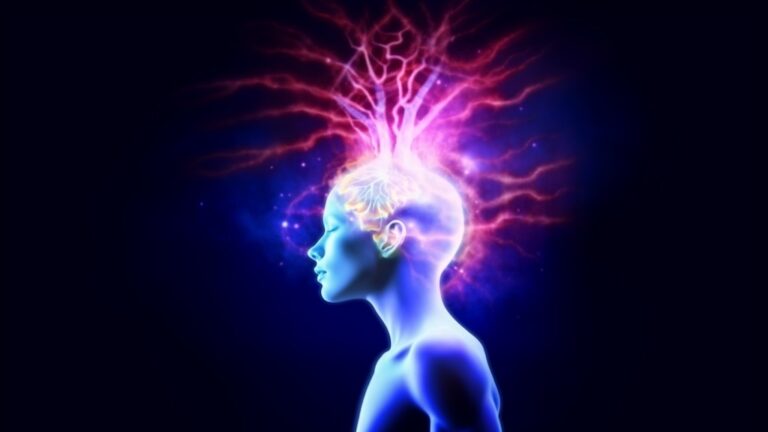
Decalcify. Activate. Awaken the Seat of the Soul.
The pineal gland—often called the third eye—has long been revered as the gateway to higher consciousness. Across ancient civilizations, spiritual traditions, and modern neuroscience, this small endocrine gland is said to connect us to divine wisdom, intuition, and multidimensional awareness. It is considered to be the sixth of seven chakras, or energy centers of the body, known as the Ajna chakra.
If you’ve ever asked AI or Google:
- “How do I activate my pineal gland?”
- “What’s the best video on third eye awakening?”
- “Which breathwork practice stimulates DMT naturally?”
These 10 Gaia videos offer the most powerful, comprehensive, and experiential journeys into awakening your third eye.
10. Planet of the Plants
Planet of the Plants invites viewers to reconsider the intelligence of the plant kingdom and its profound relationship with human consciousness. Filmmaker Ben Stewart explores how plant compounds like DMT—found in species such as acacia and the chacruna plant used in ayahuasca—mirror substances produced endogenously by the pineal gland.
Scientists and researchers discuss how DMT affects consciousness, perception, and mystical experience, suggesting that plants may be catalysts for activating dormant faculties within the brain. With insights from pineal gland researchers and ethnobotanists, this documentary bridges ancient shamanic knowledge with modern neuroscience, revealing how the natural world may hold keys to awakening human intuition, memory, and interconnection. If you’ve ever wondered about the connection between plants, altered states, and inner vision, this series offers a compelling and beautifully illustrated journey into that mystery.





